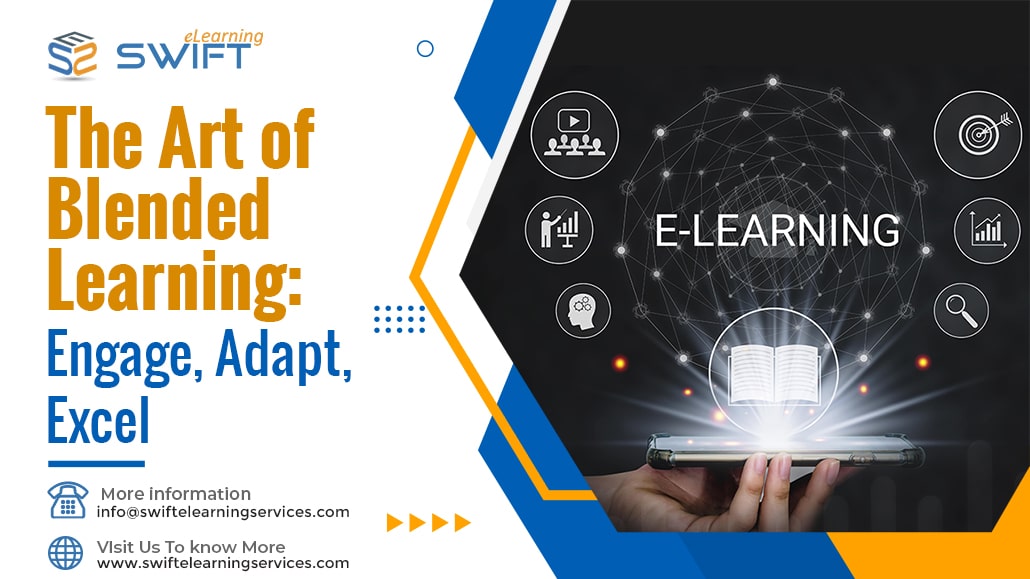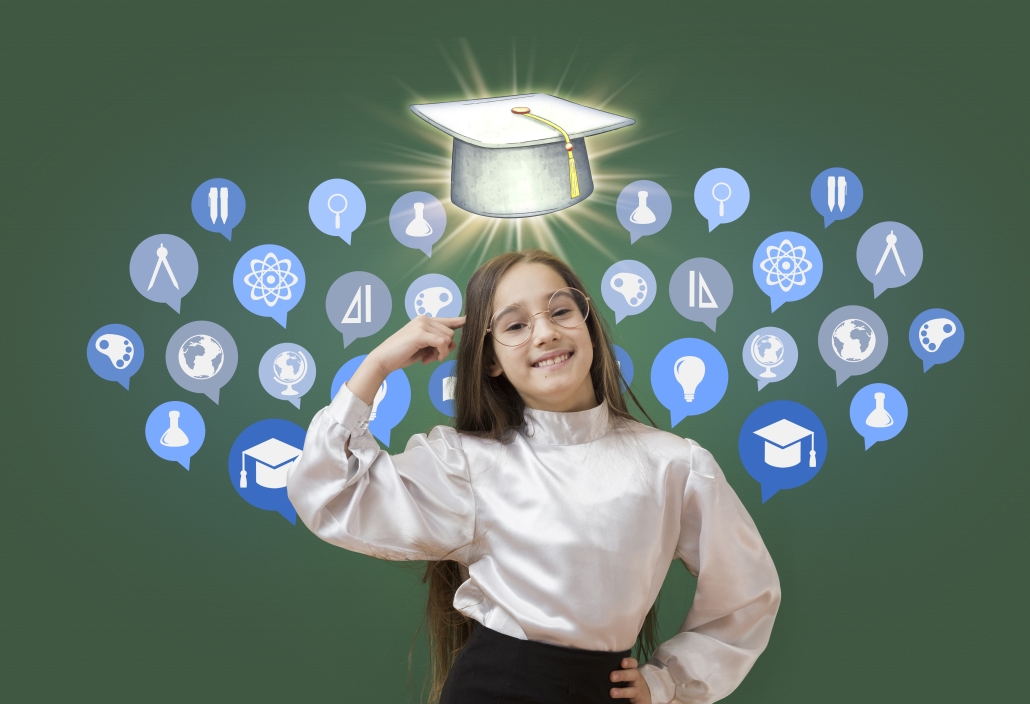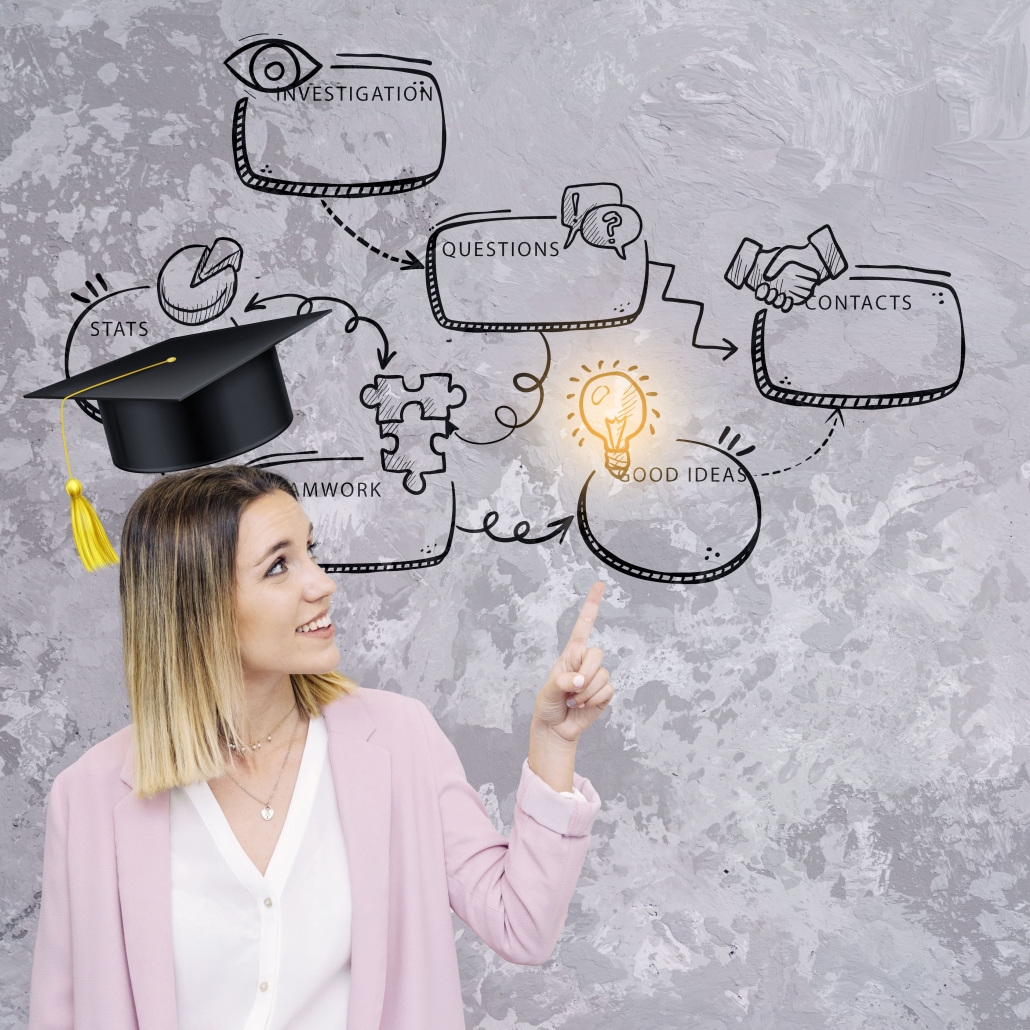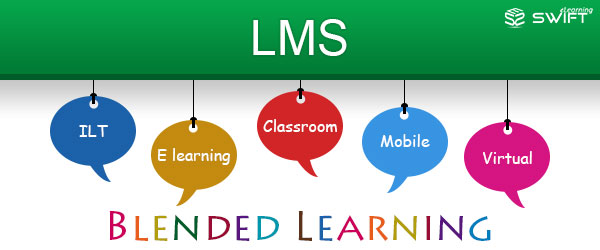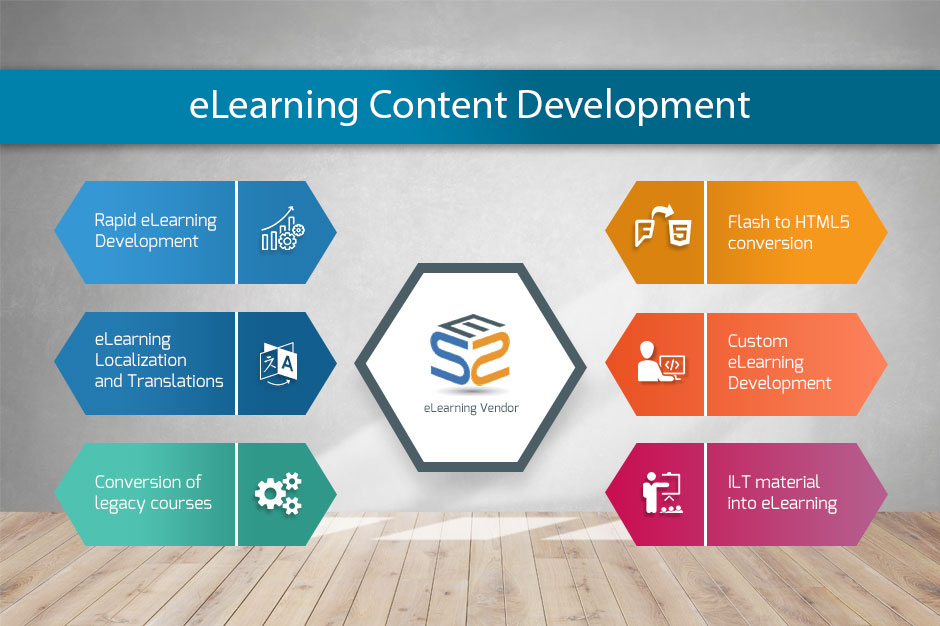The Art of Blended Learning: Engage, Adapt, Excel
Discover the power of blended learning: how it engages learners, adapts to individual needs, and enables excellence in education. Explore the key aspects of blended learning and its benefits in this comprehensive article.
In today’s rapidly evolving world, the traditional classroom setup is no longer sufficient to meet the diverse needs of learners. With advancements in technology and the increasing emphasis on personalized education, educators and institutions are turning to innovative teaching methods, and one approach that stands out is “The Art of Blended Learning: Engage, Adapt, Excel.”
Blended learning combines the best of face-to-face instruction with digital resources, creating a dynamic and interactive learning experience. In this article, we will delve deep into the concept of blended learning, exploring its many benefits, and understanding how it fosters engagement, adaptability, and excellence in education.
1. The Art of Blended Learning: An Overview
Blended learning is an educational approach that integrates traditional in-person teaching with online resources and activities. It goes beyond the confines of a physical classroom, providing learners with the flexibility to access educational content and interact with their instructors at their own pace.
Blended learning encompasses various models, from the flipped classroom to the rotational model, each tailored to suit specific learning objectives and student needs.
2. Benefits of Blended Learning
Blended learning offers a plethora of advantages that contribute to its rising popularity among educators and learners alike. Some of the key benefits include:
2.1 Enhanced Engagement through Multimedia
Blended learning incorporates multimedia elements such as videos, interactive quizzes, and gamified content, making the learning process more engaging and enjoyable for students. The diverse mix of resources keeps learners motivated and eager to explore new concepts.
2.2 Personalized Learning Paths
One size does not fit all in education, and blended learning acknowledges this fact. With the help of data-driven analytics and assessments, instructors can tailor learning paths to cater to individual student strengths and weaknesses, ensuring effective knowledge retention.
2.3 Flexibility and Accessibility
One of the greatest advantages of blended learning is its flexibility. Students can access learning materials and participate in activities from anywhere, at any time, allowing them to juggle other commitments while pursuing education.
2.4 Real-time Progress Tracking
Blended learning platforms often include tools that enable instructors to monitor students’ progress in real-time. This valuable insight allows educators to intervene when students need additional support or challenge them with more advanced content.
2.5 Improved Collaboration and Communication
Through online discussions, virtual group projects, and collaborative activities, blended learning fosters better communication and teamwork among students. These skills are crucial in the modern workforce and promote social development.
2.6 Cost-Effectiveness
Blended learning reduces the need for physical resources, such as textbooks, and optimizes the use of digital tools. This cost-effectiveness benefits both educational institutions and learners, making quality education more accessible.
2.7 Immediate Feedback
Online assessments and quizzes provide instant feedback to learners, allowing them to identify areas of improvement and make real-time adjustments.
2.8 Retention and Recall
The varied instructional methods in blended learning, such as multimedia content and hands-on activities, enhance information retention and recall.
2.9 Access to Resources
Online learning platforms offer a vast array of resources, including videos, articles, and simulations, expanding the breadth and depth of the learning experience.
2.10 Real-World Application
In-person components of blended learning, such as workshops or practical sessions, enable learners to apply their knowledge in real-world scenarios.
2.11 Self-Paced Learning
Learners can review and revisit content as needed, empowering them to reinforce their understanding at their own pace.
2.12 Reduced Learning Time
Blended learning has been shown to accelerate the learning process, enabling learners to achieve their objectives faster and more efficiently.
2.13 Geographical Reach
Blended learning eliminates geographical constraints, allowing organizations to train learners located in different regions or countries simultaneously.
2.14 Continuous Learning
Online resources and materials are available even after the in-person sessions, promoting continuous learning and skill development beyond the classroom.
2.15 Adaptive Learning
Blended learning platforms can employ adaptive technologies to adjust the difficulty and content based on each learner’s progress and performance.
2.16 Skill Transferability
Blended learning equips learners with digital literacy and communication skills, preparing them for the demands of today’s technology-driven work environments.
2.17 Data-Driven Improvement
Analytics and learning management systems provide valuable insights into learner progress, enabling instructors and organizations to refine their blended learning programs for better results.
Blended learning empowers learners with a versatile and effective educational approach, enabling them to achieve academic excellence while developing essential skills for their future endeavours.
3. Implementing Blended Learning Successfully
To harness the full potential of blended learning, educators must adopt effective strategies and best practices. Here are some tips for successful implementation:
3.1 Set Clear Learning Objectives
Before designing a blended learning course, instructors must outline clear and measurable learning objectives. These objectives will guide the choice of content, activities, and assessments.
3.2 Choose the Right Technology
Selecting the appropriate learning management system (LMS) and digital tools is critical to the success of blended learning. The technology should be user-friendly, reliable, and aligned with the learning goals.
3.3 Provide Adequate Training
For both educators and students, transitioning to a blended learning environment may require some training. Institutions should offer workshops and support to ensure everyone feels confident using the digital tools effectively.
3.4 Foster a Supportive Learning Community
Blended learning thrives in an environment where students feel comfortable collaborating and sharing ideas. Instructors should encourage open communication and establish a supportive learning community.
3.5 Monitor Progress and Adapt
Regularly assessing students’ progress and course effectiveness is essential for continuous improvement. Based on feedback and data, instructors should be prepared to adapt the course to better meet learners’ needs.
4. The Art of Blended Learning: Transforming Education
The impact of blended learning extends far beyond the realm of the classroom. As technology continues to evolve, so does the potential for innovative educational practices.
Blended learning offers a glimpse into the future of education, where personalized learning becomes the norm, and students are empowered to take control of their educational journeys.
5. Introducing Swift eLearning Services: Your Partner in Blended Learning Solutions!
Are you ready to revolutionize your organization’s learning and development strategies? Look no further than Swift eLearning Services – your trusted partner in delivering cutting-edge Blended Learning Solutions!
6. Why Choose Swift eLearning Services for Blended Learning?
6.1 Tailor-Made Solutions
At Swift eLearning Services, we believe that every organization is unique. That’s why our blended learning solutions are tailor-made to meet your specific requirements, industry, and learner demographics.
6.2 Expert Instructional Design
Our team of seasoned instructional designers is committed to creating captivating and interactive learning experiences. We blend diverse content formats, such as videos, simulations, infographics, and gamified elements, to ensure maximum knowledge retention.
6.3 Seamless Integration
Embrace innovation without disrupting your existing learning ecosystem. Our blended learning solutions seamlessly integrate with your Learning Management System (LMS) or Learning Experience Platform (LXP).
6.4 Flexibility and Accessibility
With our blended learning approach, learners have the flexibility to access course materials anytime, anywhere. Whether they prefer classroom sessions or self-paced online modules, we’ve got them covered!
6.5 Real-Time Assessments
Measure your learners’ progress in real-time with our comprehensive assessment tools. Identify knowledge gaps, track performance, and refine your training programs for optimal results.
6.6 Cost-Effective Solutions
Save on training expenses without compromising on quality. Our blended learning solutions provide cost-effective alternatives to traditional training methods, reducing travel and logistics costs significantly.
6.7 Dedicated Support
Swift eLearning Services is more than just a provider; we are your partners in success. Our dedicated support team will guide you at every step of the implementation process, ensuring a smooth and seamless transition to blended learning.
7. Take the Leap into the Future of Learning with Swift eLearning Services!
Experience the power of blended learning solutions and unleash the full potential of your workforce. Stay ahead in the competitive landscape and equip your employees with the skills they need to excel.
Get in touch with Swift eLearning Services today, and let’s embark on a transformative journey together!
Your success is our success!
8. Conclusion – The Art of Blended Learning: Engage, Adapt, Excel
“The Art of Blended Learning: Engage, Adapt, Excel” holds the key to a transformative and student-centered educational experience. By blending the best of traditional teaching with cutting-edge technology, educators can create dynamic learning environments that empower students to excel.
With its ability to cater to diverse learning styles, foster engagement, and provide personalized pathways, blended learning paves the way for a brighter and more inclusive future in education.
9. FAQ’s About The Art of Blended Learning: Engage, Adapt, Excel
How does blended learning benefit students with different learning styles?
Blended learning allows educators to cater to various learning styles effectively. For example, visual learners can benefit from multimedia content, while kinaesthetic learners can engage in hands-on activities.
Is blended learning suitable for all subjects and age groups?
Yes, blended learning can be adapted to suit various subjects and age groups. From elementary to higher education, the flexibility of blended learning makes it a versatile approach.
Does blended learning replace traditional teaching methods entirely?
Blended learning complements traditional teaching methods rather than replacing them. It enriches the learning experience and enhances students’ overall understanding.
Can blended learning be implemented in corporate training programs?
Absolutely! Blended learning’s flexibility and personalized approach make it an excellent fit for corporate training, fostering employee skill development and knowledge retention.
What role does the instructor play in a blended learning environment?
In a blended learning setup, the instructor acts as a facilitator, guiding students through the learning process, providing support, and ensuring effective use of digital tools.
Are there any potential challenges in implementing blended learning?
While blended learning offers numerous benefits, challenges may include technological barriers, resistance to change, and the need for ongoing professional development.

